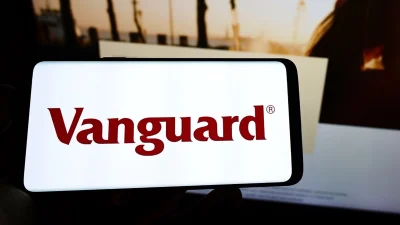‘No magic wand’ for fund managers to reach retail market



Asset management firms may be encouraged to diversify their product ranges and branch into the retail or intermediary market but, two consultants argue, it may be more complicated than they expect.
In recent years, asset managers have come under pressure from the threat of low-cost passive players and the move by superannuation funds to internalise their investment which has led to a loss of institutional mandates.
As a result, firms are looking for alternative ways to increase their profits whether that’s by launching ETFs, adding alternative funds, or reaching out to the intermediary market.
In EY’s 2025 Global Wealth and Asset Management Outlook, it stated: “Firms are offering more products to retail investors, stepping up their focus on private wealth, and incorporating new features into existing strategies. Education, engagement, and responsible innovation will be more crucial than ever in 2025.
“Broadening and deepening investment offerings is a crucial strategic priority for 2025, especially given the backdrop of unprecedented intergenerational wealth transfers, the rise of new profiles such as female investors and the continued democratisation of alternative assets.”
Speaking to Money Management, two consultants argued this is not always a simple move and can come with significant costs which asset managers need to factor into their plans.
Darren Connolly, chief marketing officer at InvestmentMarkets, said: “Asset managers are getting squeezed, but the intermediary market has always been hard to access. It takes time and can be costly, so firms need deep pockets.
“You need to get the fund on a platform which takes being rated, and sometimes the research house might want a track record first. You need to get your name out there at conferences and sponsorships, so that’s a big expense before you even have people invested. Then you add on business development, marketing, communication teams, and salaries there can add up to another $500,000.
“Once you are on a platform, you still need to convince advisers to pick your fund over another one and consider it worth rewriting their SOAs.”
For Rita Da Silva, asset and wealth management leader at EY Oceania, she said firms need to understand that they cannot just switch an existing product from institutional or wholesale over to retail.
“If you want to go into the retail market, then you can expect some extra compliance burdens. You need to become a responsible entity and have a responsible manager, a stable capital base; there’s design and distribution obligations (DDO). You need a target market determination (TMD); you need to continually monitor the distribution of the product. It’s a whole new ballgame.
“But we do have a mechanism in Australia of independent responsible entities who will provide that function for you, either for domestic managers or one looking to come to Australia, but they will charge a fee for this.”
Both Connolly and Da Silva noted the fact that research houses typically prefer a fund to have a three-year track record. This can leave firms at the mercy of tapping their friends and family for investment in the earlier period which, Connolly said, “can be exhausted fairly quickly”.
From a marketing perspective, Connolly added one area where firms can come unstuck is the need to build a public presence with the retail or advisory market. While managers like Kerr Neilson at Platinum, Roger Montgomery and Hamish Douglass at Magellan have achieved success with this endeavour, it is not for everyone.
“We have seen asset managers toy with the D2C market, but it’s a three- to five-year time commitment because you have to build the brand and stick with it to get that public recognition. Unfortunately, what makes them very good fund managers isn’t the same as what makes people good at marketing.”
“To get to advisers, you have to have a distribution network of people who go out to advisers and speak about the product so they get to know you, and there is a cost to have this distribution network. We are seeing strategic partnerships where they take a non-controlling stake in the business and you can access their distribution network to distribute your asset – we’re seeing that a lot,” said Da Silva.
As for tips, Connolly said the product needs to be differentiated, be easily understood, very clear on what it is doing, and able to sell to the market.
“There’s no magic wand beyond time, a real commitment, and money,” he concluded.
Recommended for you
Two former senior Global X employees have launched their own ETF provider, ETF Shares, focused on offering index ETFs for advisers and retail investors.
Index provider MSCI has unveiled two measures to make it easier for financial advisers and wealth managers to access transparent insights into private assets.
Vanguard has announced a strategic alliance with two US alternative asset managers to develop multi-asset solutions for financial advisers which combine public and private markets.
Clime Investment Management has enacted a range of growth initiatives to boost the firm’s reach with wholesale investors and a new approach targeting the retail market.















